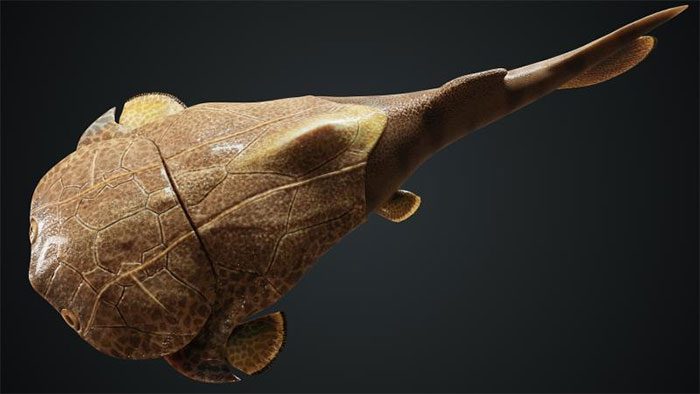According to experts, the newly discovered fish species not only has skin as tough as armor but also possesses permanent teeth.
According to SCMP, paleontologists in China have reported the discovery of a new species of placoderm fish, scientifically named Bianchengichthys micros, in the city of Chongqing, southwest China. This fish has skin as tough as armor and appeared in China 423 million years ago. This new finding was specifically revealed in a research paper published in the scientific journal Current Biology in mid-June.

A 423-million-year-old fish fossil discovered in Chongqing, China, was introduced to the public on June 21. (Photo: Handout).
This new discovery has provided crucial data for understanding the important evolutionary branching that occurred hundreds of millions of years ago during the Silurian period—a part of the Paleozoic Era before the dinosaurs appeared.
More than 420 million years ago, fish evolved along two distinct paths, including bony fish—the class that makes up most of today’s fish—and cartilaginous fish—the class that includes sharks and rays. The newly discovered fossil is believed to belong to a species closely related to the last common ancestor of both classes of fish.
Zhu You-an, one of the authors of the study and a scientist at the Institute of Vertebrate Paleontology and Paleoanthropology, Chinese Academy of Sciences, stated that the new fish has a jaw structure similar to that of bony fish and possesses permanent teeth—a characteristic of placoderm fish.
“Based on these features, the newly discovered fish represents a transitional stage between primitive and modern jawed animals”, said Zhu.
Dr. Michael Pittman, working at the Vertebrate Paleontology Laboratory at the University of Hong Kong, noted that the study published in Current Biology is fascinating as it provides scientific information about when fish began to evolve and diverge into two classes: bony and cartilaginous fish.
Pittman further added that the fossil of the new placoderm fish is exceptionally well-preserved—a rarity worldwide.
“China is one of the few places in the world where ancient fish fossils are found in nearly pristine condition”, Dr. Pittman remarked.
Zhu and his colleagues compared the newly discovered fish with other placoderm species and found similarities between the species found in China and another species discovered in central Vietnam. A hypothesis suggests that hundreds of millions of years ago during the Silurian period, the two regions—where the new placoderm fossil was discovered—may have been geographically close.



















































